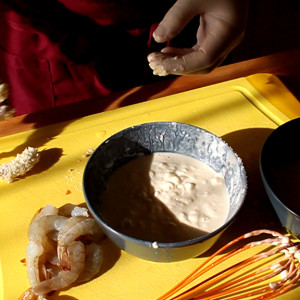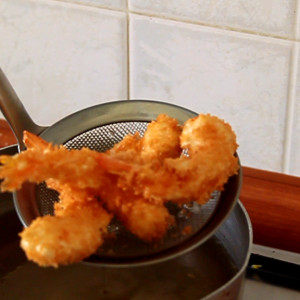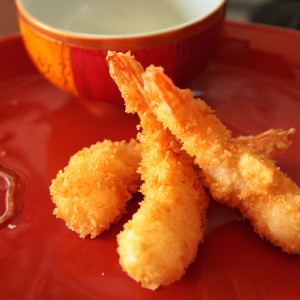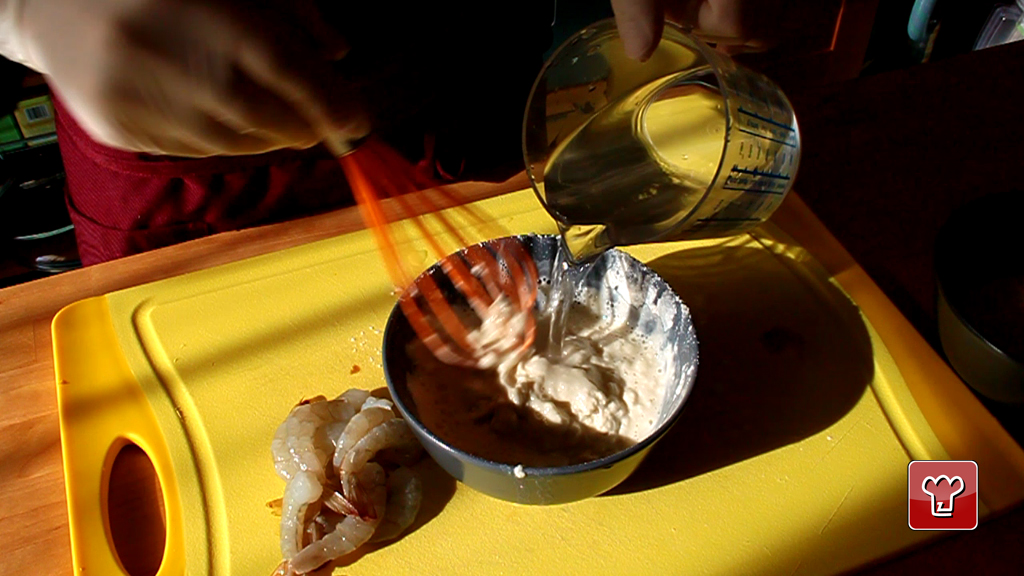Tempura
The tempura is a classic dish of Japanese cuisine, consisting of delicate morsels of either fish or vegetables fried in a special light batter made from flour and iced water. The difference between this tempura batter and normal batter is that because the water is ice cold this causes a thermal block, resulting in a finish that is crispier and lighter than usual. So, let’s learn the technique of frying tempura: we are going to indulge ourselves and apply it to various types of vegetables and fish. You’re always going to have near at hand a winning idea for an unusual appetizer or a delicious starter for lunch or dinner with your guests. Either way you'll make a great impression .... To get perfect tempura just follow our recipe, accompanied by the video and photos showing all the steps taken by our chef... So, now is the time to make perfect tempura together!
Ingredients
-
waterfall 300 millilitres

Send the recipe
Preparation
Peel the prawns. Prepare a batter with rice flour and iced water mixed together so as to make it quite lumpy. Put some very coarse breadcrumbs on a plate. Then dip the prawns in the batter and then immediately in the breadcrumbs. Heat the oil and deep fry the prawns in the tempura batter. Serve with the hot dashi stock in a small bowl.
Step by step
|
View the step by step

|
Dip the shelled prawns in the batter and then in some breadcrumbs suitable for tempura
|
|
View the step by step

|
Fry the battered and breaded prawns
|
|
View the step by step

|
Let the prawns fry until they are noticeably golden
|
|
View the step by step

|
Drain the prawns of the oil once they are nicely golden
|
|
View the step by step

|
Serve the tempura hot with a bowl of warm dashi broth
|




